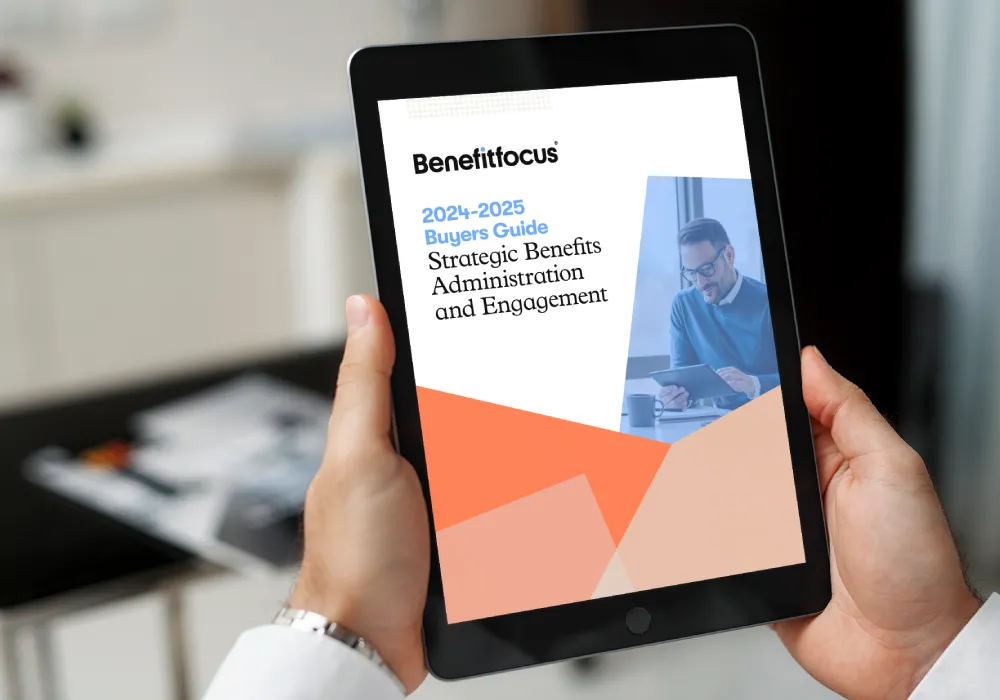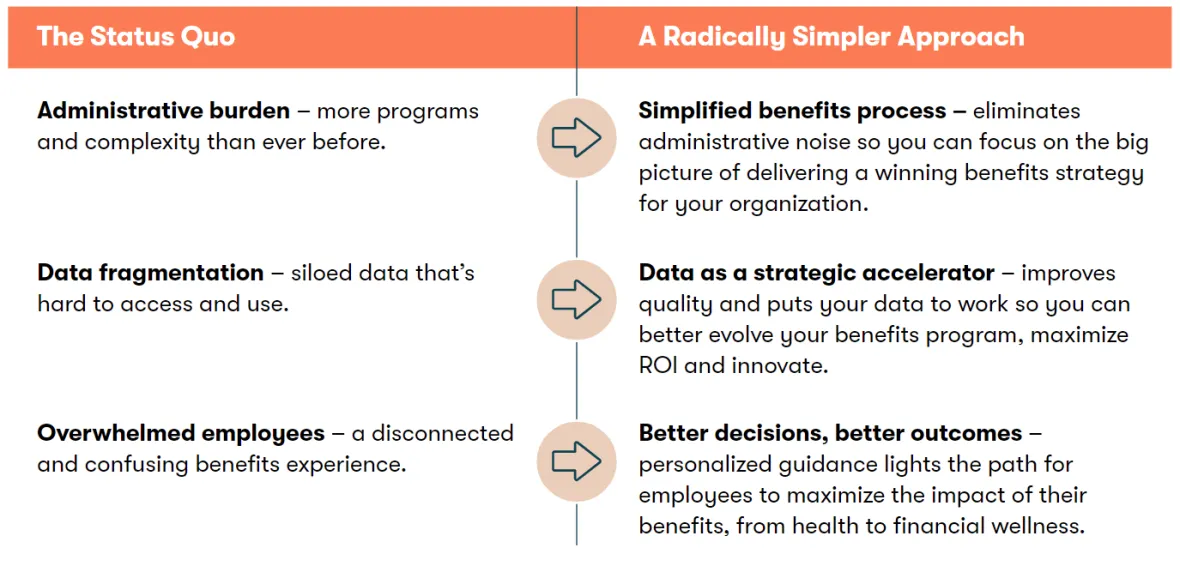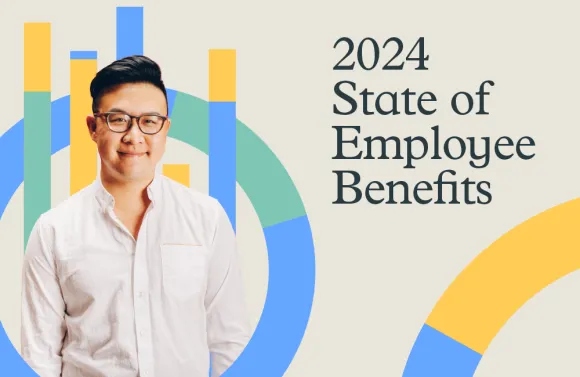
Employers, HR teams and benefits leaders are under enormous pressure to deliver a modern, personalized benefits experience tailored to the needs of their specific employee population.
There is an urgent need to simplify and enhance the benefits experience — both to reduce costs and administrative burden for HR teams and to attract and retain top talent. Technology is widely considered to be the solution to these challenges, but which technology – and which vendor partner – is the right fit for your clients?
Explore these key takeaways from our just-released 2024-2025 Strategic Benefits Administration and Engagement Buyers Guide – and what they mean for you. (For the full story, get the guide here.)
Takeaway #1: Benefits are Essential to Attract and Retain Talent
Your efforts to shape your clients’ strategic approach to employee benefits are more important than ever.
We’ve long touted benefits as being among the most important factors in attracting and retaining the top talent organizations need to survive and thrive. Intuitively, most employers — and certainly benefits consultants — understand the role benefits play in an employee’s decision-making process when choosing where to apply and which jobs to accept.
However, what you might not realize is just how important a strong benefits program is. According to Buck’s 2024 Wellbeing and Voluntary Benefits Survey, an incredible two-thirds of employees would change jobs for better benefits.
Note that this doesn’t say “two-thirds of employees who are looking for a job.” It says two-thirds of all employees. That means employers that lack a truly high-quality benefits program — or don’t communicate it convincingly to their employees — can and do lose talent on a regular basis to (often competing) organizations that do.
Outside of the roles they hire for, benefits are perhaps the most meaningful differentiator in the job market — both in terms of attracting top talent and retaining a loyal and effective workforce. With the competition for top talent heating up, benefits are a decisive battleground.
Takeaway #2: Benefits Administrators Face Significant Challenges
Your clients increasingly depend on you to help them overcome barriers and see potential in new opportunities.
For a benefits program to be attractive and effective in helping organizations reach their goals, employees and prospective employees need access to a competitive benefits package that meets their needs and expectations. Simple enough to say – but much more difficult to achieve.
As explained in the 2024-2025 Strategic Benefits Administration and Engagement Buyers Guide, your clients’ best-intentioned efforts are at risk of failing to reach their strategic potential due to a number of complex and often interrelated challenges that you can help them validate, understand and manage.
Macro-drivers like the economy and job market, not to mention ever-rising health care costs, are perennial issues for benefits professionals. Decades of spiraling health care costs have led to employers spending a huge amount of money on their benefits programs. According to the Bureau of Labor, benefits account for 29.6 percent of total employer compensation costs. With employer health care costs expected to rise 5.4 percent to 8.5 percent in 2024, these cost challenges will likely only increase.
But the challenges don’t stop there. In addition to competition and finances, there are three more major barriers that prevent employers from improving and communicating their benefits programs:
- Administrative burden caused by program complexity and outdated systems/processes.
- Fragmented data that’s hard to access and use to improve the employee experience.
- Overwhelmed employees who struggle to navigate confusing benefits journeys.
Employers need help addressing these challenges to make meaningful progress in improving the benefits experience and thereby attracting and retaining top talent. This is one of the areas where your role as a benefits – and benefits technology advisor – can take center stage. It’s where a better benefits administration solution can make a significant impact on your clients’ organizational outcomes.
Takeaway #3: A Simplified Approach to Benefits Is the Answer
You can match your clients with a right-fit benefits administration partner that can help them simplify benefits for their HR teams and employees.
The traditional approach to benefits is falling short — and by a potentially greater margin each year, as costs rise and benefits engagement drops. HR teams and benefits leaders need help to radically simplify the systems, processes, and outputs of their benefits programs so they can:
- Understand their employee population and what it needs from a benefits program.
- Design intuitive benefits experiences that engage and support employees.
- Better guide employees on which benefits to choose and how to use them.
- Reduce administrative burden so they can focus on high-value strategic initiatives.
- Communicate the value of their benefits programs to attract and retain top talent.
So, what does it take to clear a path to easier administration, streamlined benefits experiences and better outcomes? As shown in the buyers guide, a new approach to benefits administration can deliver impact where your clients need it most:

This is where modern technology comes in. Benefits programs that rely on arduous manual processes aren’t capable of producing the population insights, tailored benefits and outstanding employee experiences necessary to attract and retain top talent in today’s world. Put simply, tomorrow’s challenges and opportunities can’t be met with yesterday’s solutions.
Next Steps
To help your clients determine which technology solution will deliver the functionality, integrations, and modern consumer-centric benefits experiences they need to differentiate themselves and protect the health and financial wellbeing of their employees, we’ve just released the 2024-2025 Strategic Benefits Administration and Engagement Buyers Guide.
This guide will help you, your clients and their technology buying teams identify what to look for in a solution and a partner that can best support their year-round benefits strategy. Inside, you'll discover:
- The anatomy of a strategic benefits administration and engagement solution and how it can help employers address their top challenges.
- What to look for in a solution across the key dimensions of core administration, service & support, the employee benefits experience and partner fit.
- The essential, must-have capabilities of a technology solution that truly addresses the needs of employers, HR teams, benefits leaders and benefits consultants.
- How to assess a potential technology partner and what a successful strategic vendor partnership looks like.
Download your 2024-2025 Strategic Benefits Administration and Engagement Buyers Guide.


